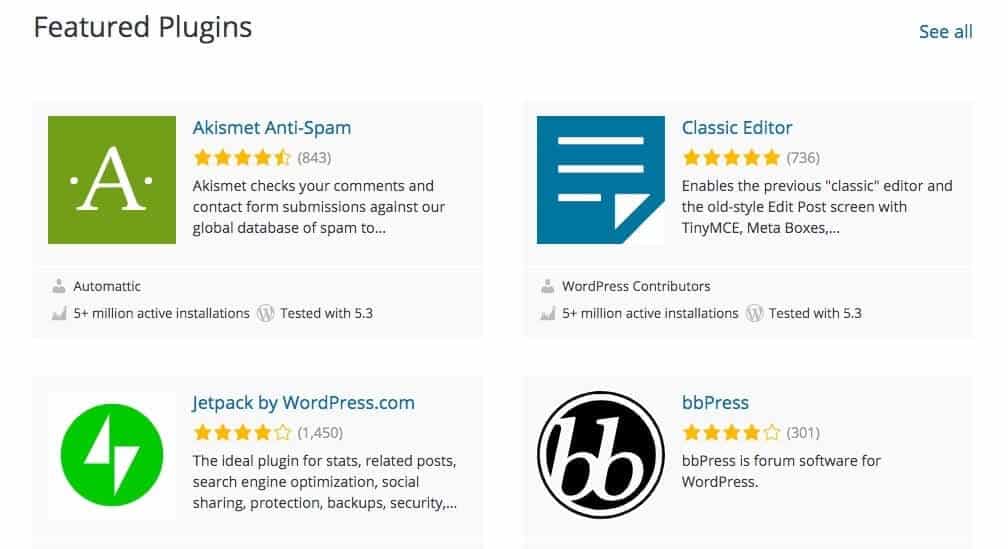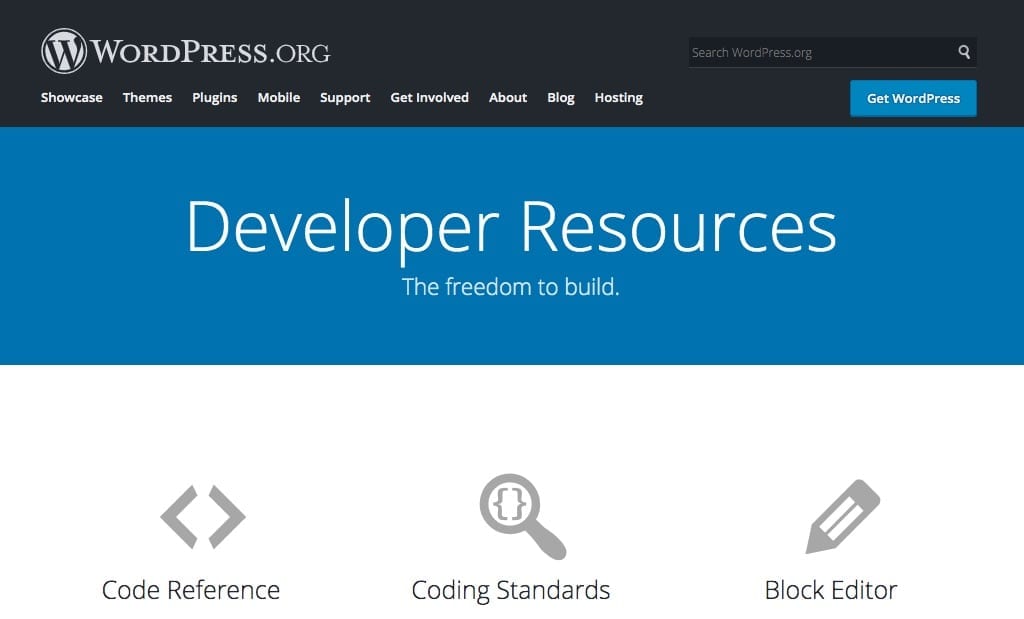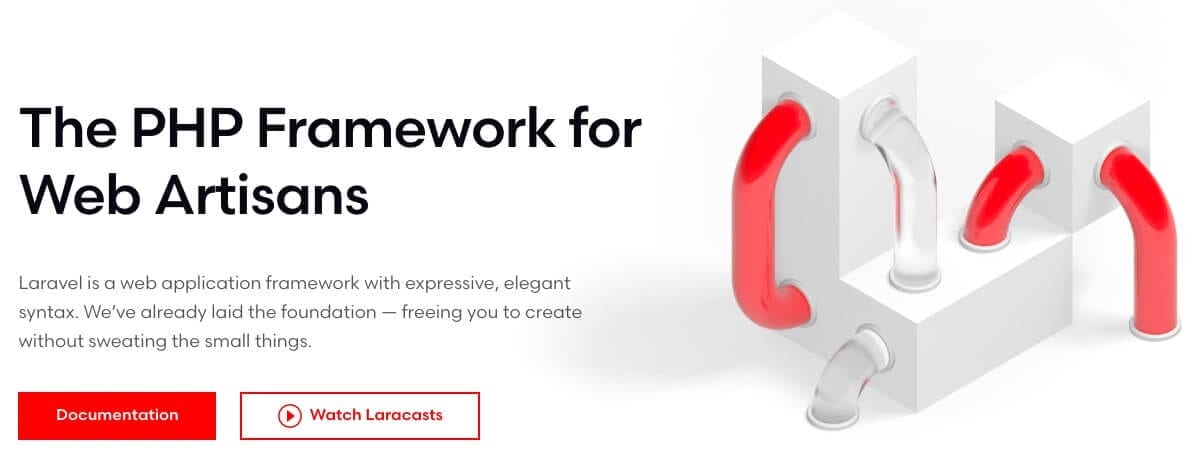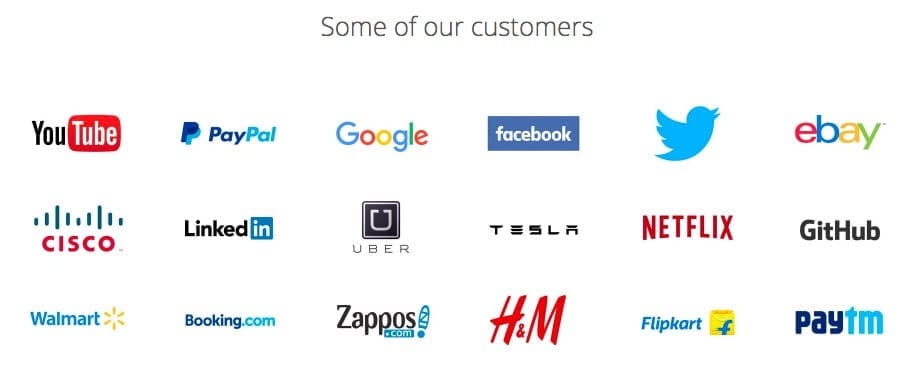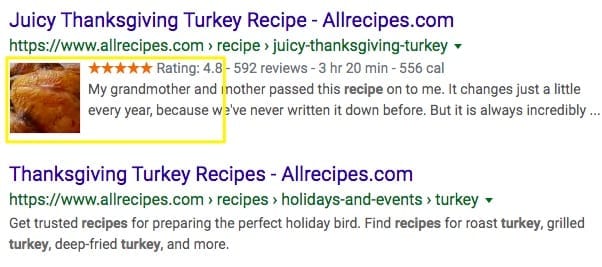Being a full-stack web developer can be challenging – there’s a lot to master and plenty of scope for development. As such, you may often wonder what more you can do to round out your skillset. Assimilating the newest web development technologies into your knowledge is a great start.
Fortunately, technologies such as Progressive Web Applications (PWA,) can be easy to learn. In fact, if you’ve mastered the fundamentals of full-stack web development, many of these may already be in hand.
In this article, we’ll list the essentials and some of the latest web development technologies that every full stack developer needs to know. We’ll outline different products and emphasize why certain technologies are critical to high-end web development. Let’s dive right in!
In This Article 🚦
- How the Latest Web Technologies Might Influence Your Work
- What You Need to Know About Web Technology Before You Start
- 9 Must-Know Web Development Technologies for Full-Stack WordPress Developers
- 9 Web Development Technologies Full-Stack WordPress Web Devs Should Know
- How to Keep Your Full Stack Development Skills Sharp
Our team at WP Buffs helps website owners, agency partners, and freelancer partners monitor their WordPress sites 24/7. Whether you need us to manage 1 website or support 1000 client sites, we’ve got your back.”
How the Latest Web Development Technologies Might Influence Your Work 👩💻
Keeping up with the evolution of the web is notoriously difficult. However, having a well-rounded stack of the latest web development technologies in your pocket can be a big differentiator between you and your competition.
In fact, when we talk about “developing a full stack of technology skills, ” we should also mention the concept of working toward becoming a ‘T-shaped’ developer.
This means you have an extensive set of skills and depth of knowledge (represented by the vertical part of the letter.) However, this means you also have the broad ability to collaborate across disciplines, as represented by the top of the ‘T’.
🥞 Building a 'T-shaped' skill set can benefit your full-stack approach to web development technologies! #WordPress Click To TweetWhen you take on the T-shaped mindset, you’re working toward being a flexible developer who can take a client from start to finish, and bring their visions to fruition. As technology advances, your full-stack toolbox will therefore make it easier to understand and integrate new technologies as they are developed.
What You Need to Know About Web Development Technologies Before You Start 🏁
If you’re just getting started with developing web technologies, there are a few structural terms you should know. This will make it easier for you to ‘talk the talk’ and understand the context of what we’ll discuss. Even if you’ve been developing web technologies for a while, a good review never hurts. Keep these helpful terms in mind as you learn about new web technologies:
- Client-side: This term is typically used when referring to a particular script. Client-side scripting means the action executed will be delivered (and will take place) on the web ‘client’ or user’s computer.
- Server-side: The other half of the coin is a ‘server-side’ script. This is essentially code that executes only on the server of your website.
- Front end: As a kind of partner term to client-side, when we talk about the ‘front end’ of a website, we are referring to the visual display of the content, typically what is viewable in a web browser.
- Back end: In contrast, the ‘back end’ of a website is the administration interface you would use to configure settings and add new content.
In a nutshell, a full-stack developer breaks down the walls between all of the siloed expertise in the above list. With this in mind, we’ll move from the basics to more specialized technologies in our list of items you should be mastering as a full-stack web developer. Get ready to dominate the development game in 2021!
9 Must-Know Web Development Technologies for Full-Stack WordPress Developers 🥞
- Web Browsers
- Common Web Protocols
- Programming Languages
- Application Programming Interface
- PHP Frameworks
- Databases
- Progressive Web Applications
- SSL and TLS
- Schema and Markup
9 Web Development Technologies Full-Stack WordPress Web Devs Should Know ⚙️
Essentially, having a full stack of skills means you could personally take a project from start to finish. However, there are a lot of different technologies involved in what is considered full-stack development. Let’s break down nine of them!
1. Web Browsers
Understanding web browser technology is essential for a full-stack developer. Web browsers request information from databases and applications, then display the information in a way that we can view and consume it. You could see them as translators and interpreters in the online world.
There are roughly four main web browsers to consider as a developer:
- Chrome. Google’s own web browser is far and away the most popular web browser currently. With 68.33 percent of all web browser usage in October of 2019, it’s clear that understanding Chrome is a must for web technology developers.
- Safari. This is Apple’s own browser, tightly integrated with iOS and macOS. It falls around number five in the list of browser market share, coming in after Microsoft’s newer Edge browser.
- Firefox. Developed by Mozilla, this is an open-source web browser. Mozilla’s mission is to keep the internet open and free to all. The Firefox browser comes in second behind Chrome, and is some way off with 8.68 percent of the browser market share.
- Internet Explorer (IE). Microsoft’s legacy browser is still hanging in the top three in terms of market share with a 6.3 percent chunk of browser usage. However, as we mentioned, while Edge is overtaking it, IE is still important enough due to its need for specific hacks.
Web browsers are growing in number, seemingly by the year. This is especially true in the area of mobile browsing, although understanding the nuances of the most used browsers is where you should focus your energy. Looking at the market share, developing with Google’s Chrome browser in mind will clearly get you quite far.
Also, the most popular web browsers will usually offer more helpful developer tools. Depending on what kind of project you are working on, you should start by exploring each browser’s toolkit. For example, Google offers a robust developer toolkit with almost everything you need to understand development for Chrome.
2. Common Web Protocols
Protocols are essentially sets of instructions that manage pretty much everything we do online. Like traffic cops at an intersection, they direct data traffic and keep requests moving to and from their destinations. There are quite a few protocols in use, but the foundation of our work on the internet can be formed by three in particular:
- HTTP. HyperText Transfer Protocol is probably the most essential part of what happens between front end web users and servers. HTTP is what handles the input request from the web browser and the output result from the webserver.
- FTP. File Transfer Protocol is a set of rules that enables you to transfer files and information among networked computers. While you can download files via FTP without a client application, you’ll need one to upload files. There are many FTP applications to choose from, such as CuteFTP or Filezilla.
- TCP/IP. Transfer Commission Protocol and Internet Protocol are the primary communication protocols used for relaying data on the internet. If you’re interested in the origin of the internet, this is essentially the big bang.
Developing for the web today has come a long way from the days of TCP/IP packet-switching, but understanding the roots of modern web development goes a long way to making you a more well-rounded and competent developer.
3. Programming Languages
Once you understand how browsers and protocols play into the ecosystem of web development, there is the matter of the languages that create everything else. Gaining dexterity with programming languages is a valuable quality in a full-stack web developer. This means not only mastering basic Hypertext Markup Language (HTML), which still constitutes a large portion of necessary programming online but gaining proficiency in several other languages as well.
The three languages every developer should know are HTML, Cascading Style Sheets (CSS) and JavaScript (JS). Depending on your project, understanding Hypertext Preprocessor (PHP) is also a great asset. Let’s take a look at them individually.
Using HTML should be the backbone of your programming toolkit. It is the standard markup language for creating web pages and the best jumping-off point for learning other programming languages. It’s also important to follow recommended standards of quality when writing in HTML.
Next, CSS is a stylesheet language that prescribes a set of styles to HTML elements. For example, you can use CSS to apply a red font color to all H1 headers in your HTML documents. This means any HTML document referencing the CSS file would display red H1 headers, without you having to manually code it into each H1 HTML element. CSS can save you a lot of time as a developer.
While HTML defines the content and CSS specifies the style of a web page, JS prescribes a behavior. This means you can use JS to create dynamic functionality for your web site. Over time, client-side JS has become even more versatile, and can be used in a variety of applications. For example, it’s vital for developing the WordPress products of the future.
The fourth component of a well-rounded set of programming language tools is PHP. As an oversimplification, this is code that can be embedded in HTML. The difference between PHP and JS is that PHP is executed server-side. It processes HTML pages and delivers a result to the client. It is widely used in open-source applications.
4. Application Programming Interface (API)
An Application Programming Interface (API) is essentially a set of protocols and definitions that enable software applications to exchange information or integrate. APIs currently make much of what we do online possible. For example, much of what makes WordPress such a flexible platform is rooted in its extensive API offerings.
WordPress’ core makes posts, pages, permalinks, taxonomies, and more all available as URL endpoints. This means as a developer, you can hook in through the API to extend WordPress’ functionality through plugins, or pull content and data into other websites or applications.
5. Development Frameworks
Development Frameworks are pre-built structures that enable you to develop applications more quickly. These frameworks help you build reusable code that increases your development speed. This can also help you maintain and scale applications over time.
🖥️ Development frameworks can greatly increase your development speed. Add one to your stack! #WordPress Click To TweetThere are frameworks for just about any kind of programming language. One popular PHP framework is Laravel.
Frameworks typically follow a ‘Model-View-Controller’ (MVC) pattern that separates the logic work from the presentation layer of your development. This is a modern approach that promotes sound web development practices.
Another framework example is Ruby on Rails. This is a server-side web development technology with robust code reusability functions. You can seriously speed up your development time with Ruby:
The popular open-source code repository, GitHub, is built with Ruby, as is the popular BaseCamp application. In general, incorporating a web development framework into your workflow can level up your value as a developer, whether you’re a freelancer or working for an agency.
6. Databases
Moving on to where all the hard work of coding and programming eventually comes and goes, we have the database. The most common way to store data for web development is through Structured Query Language (SQL). This means your data is stored in a highly structured and relational way in tables with columns and rows, like a spreadsheet. This data is accessible in a raw format through queries you create with programming languages.
The most popular SQL database for web development is MySQL:
Used by many big names such as YouTube, PayPal, and Google, MySQL pretty much dominates the web development database arena. MySQL is used overwhelmingly by United States-based companies. In fact, 36 percent of its users are based in the U.S. Overall, MySQL holds a 20.5 percent market share, with over 160,000 companies using it to develop software and applications.
There are other database options too. For example, PostgreSQL is an open-source SQL database option that is growing in popularity. However, in comparison to MySQL, it still holds a very small market share at just 5.7 percent. Regardless of the database you choose, managing one is an essential part of full-stack web development.
7. Progressive Web Applications
A growing trend in web development is Progressive Web Applications (PWAs). These are websites that look and feel like mobile apps, but cut out the need to download an actual application from an app store.
When a web user visits a website built as a PWA, they are typically prompted to add it to their home screen. The site is then cached on the device and made accessible through an app-like icon. A PWA site will load lightning-fast, and is usually more than just a website built to be mobile-friendly.
Additionally, as PWA development has grown Google has integrated the ability for desktop Chrome browsers to work with PWAs. Previously, these were only compatible with mobile Chrome browsers.
Ultimately, being able to develop websites as PWAs can be a highly-marketable skill in your stack. As we mentioned, this is more than just making a website mobile-friendly – it’s utilizing multiple web assets to develop a fast, reliable, and engaging experience for users, without duplication or reinventing an existing website.
8. SSL and TLS
While technically considered protocols, we thought Secure Socket Layer (SSL) and Transport Layer Security (TLS) deserved separate attention. These technologies are vital for keeping your web development secure.
These certificates are how you can secure your data transfers over HTTP. Essentially, it’s what adds the ‘S’ – “Secure” – to HTTPS. This one letter is what indicates to web users that information will be exchanged over an encrypted transfer process. However, it’s important to note that it doesn’t secure the database or server where information is stored.
SSL and TLS certificates are issued by certificate authorities. They manage the encryption that secures the information transferred on websites with their SSL and TLS certificates. The terms TLS and SSL can be used interchangeably, but it’s important to note that TLS is the more modern predecessor to SSL.
Finally, it’s also important to make sure you’re administrating your WordPress work over a secure network. This is a critical element, especially if you’re building a culture promoting secure web practices in an agency setting.
9. Schema and Markup
Schema is a set of structured vocabulary that helps to define in detail the items we put online. For example, Schema enables you as a developer to add structured markup to a recipe. As a result, you can make sure a web browser or search engine will see and display images, reviews, and other information in a rich format.
Adding Schema markup to your web content has become pretty important. In fact, Google recently began issuing notices to websites not using proper markup to identify their video content. As Search Engine Optimization (SEO) continues to be a key to success for many online businesses, making sure you can provide ways to ensure a client’s content is properly marked up with structured data is definitely a skill you should have in your stack.
How to Keep Your Full Stack Development Skills Sharp 🔪
It might seem like a daunting task to incorporate all of these web development technologies into your portfolio of services. Fortunately, there are quite a few resources available in terms of professional development.
If you’re looking to add some of these web development technologies to your arsenal, you can find workshops and tutorials around the web in places including:
- LinkedIn Learning
- Massively Online Open Courses (MOOCs)
- Online courses from industry leaders like JavaScript or Udemy Web Development Bootcamp
- Attend a WordCamp
The WordPress and open-source programming community are full of helpful resources. It’s also not a bad idea to gain some certifications in different programming languages or technologies, if possible.
Wrapping Up ⏲️
While it might seem like there are just too many new web development technologies to keep track of, continuously building your stack can be key to success. Whether you are a lone developer or work for an agency, understanding and being able to deploy development projects using programming languages, Development Frameworks, and APIs, will make you a valuable asset.
Fortunately, there are many ways to acquire and sharpen your development skills. In many cases, the latest web development technologies can be learned online. Whether you check out LinkedIn Learning or a reputable MOOC, you can find lots of ways to gain and practice new skills.
Of course, it’s important to keep in mind what is needed after you develop an amazing website – support! At WP Buffs, we can help support all your post-development needs with a wide variety of WordPress Care Plans and packages.




